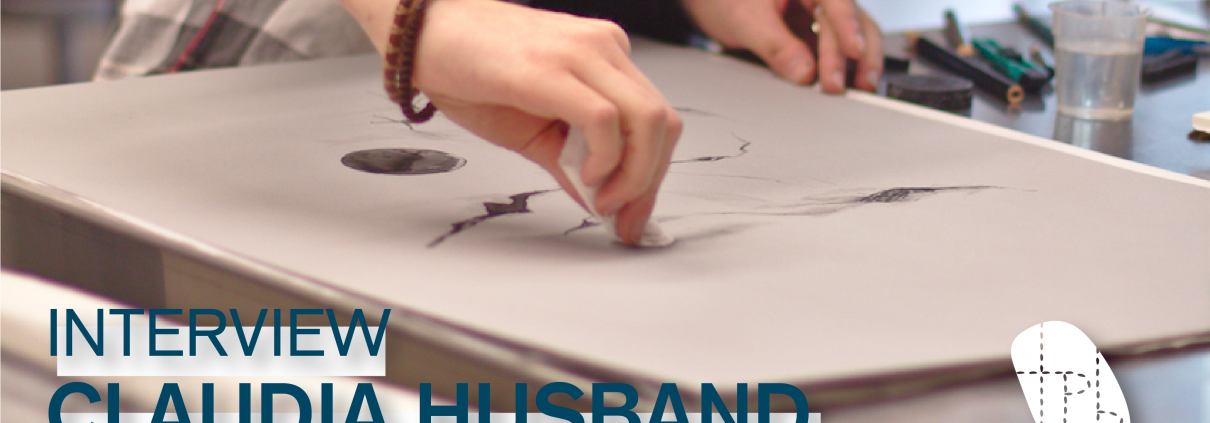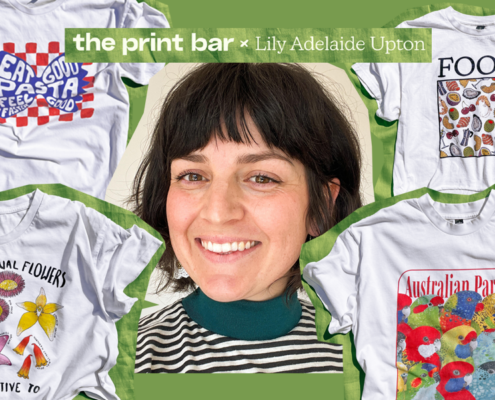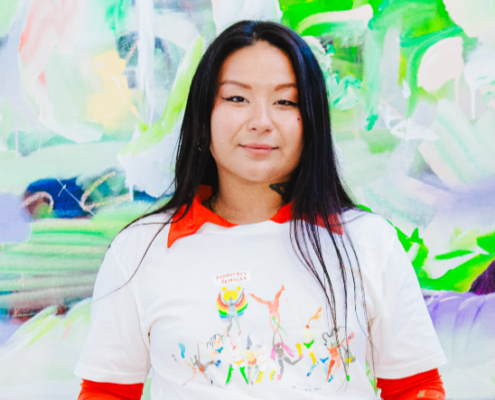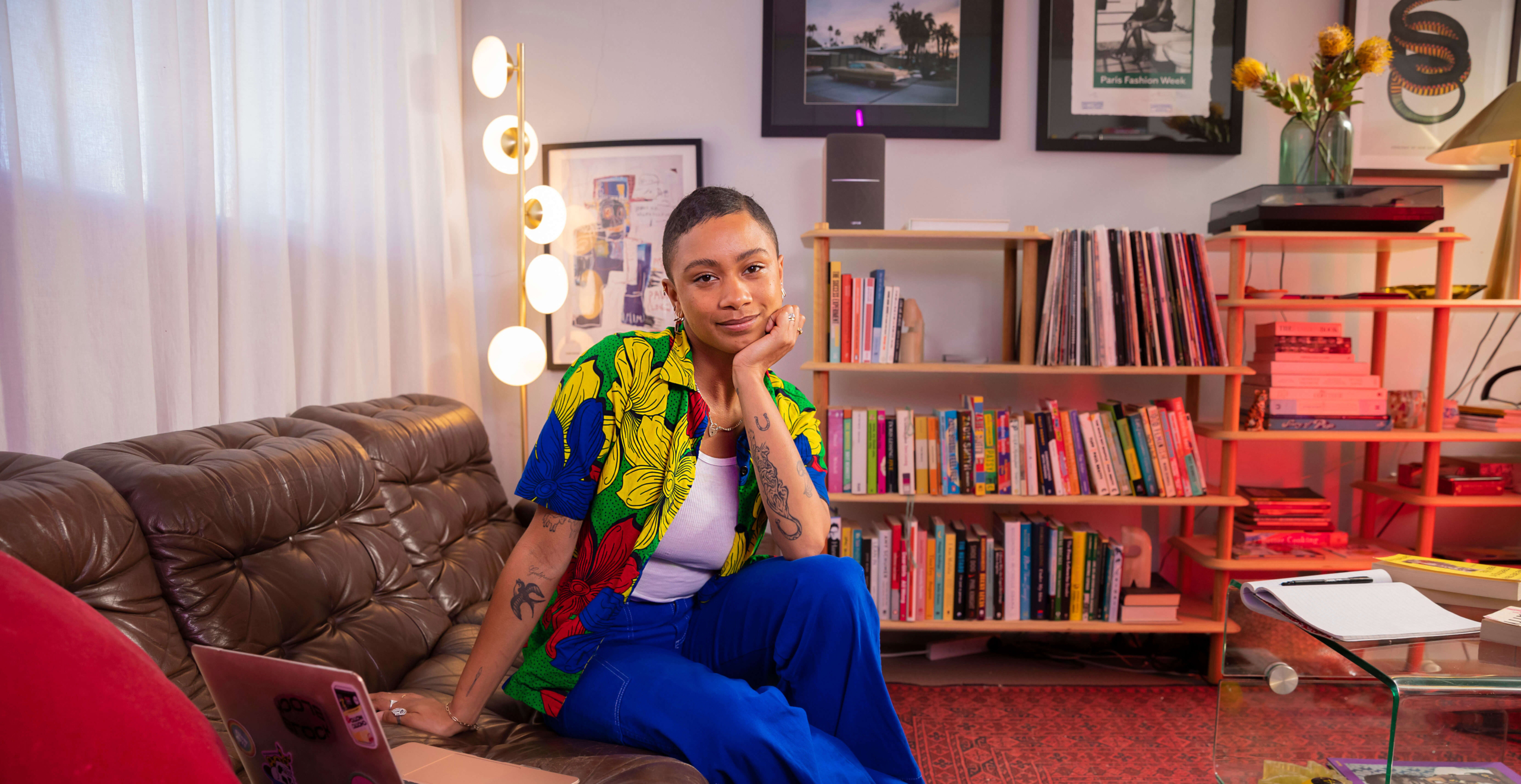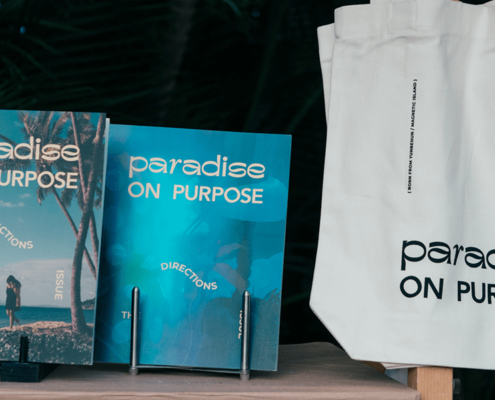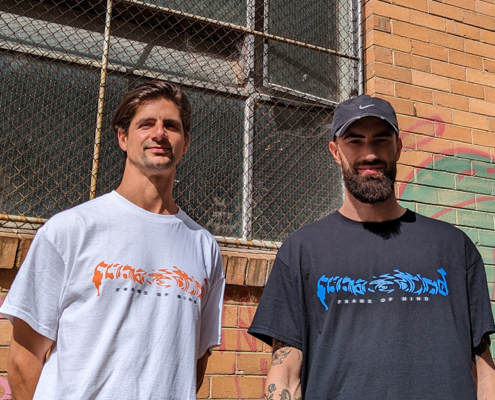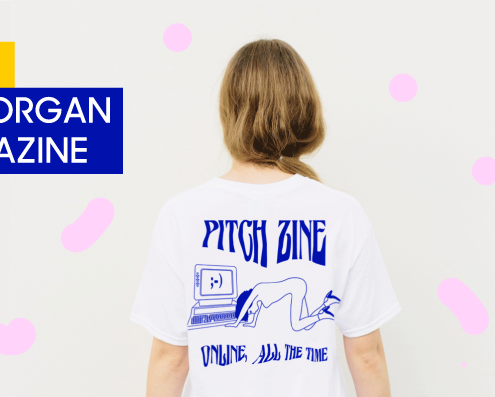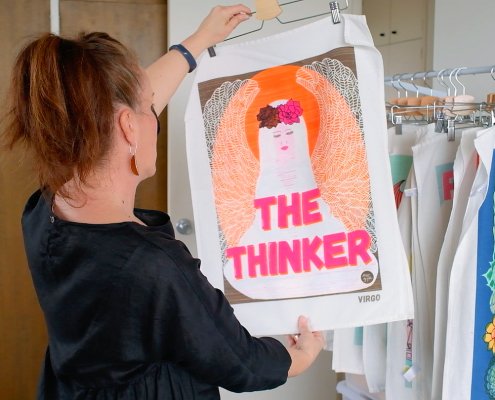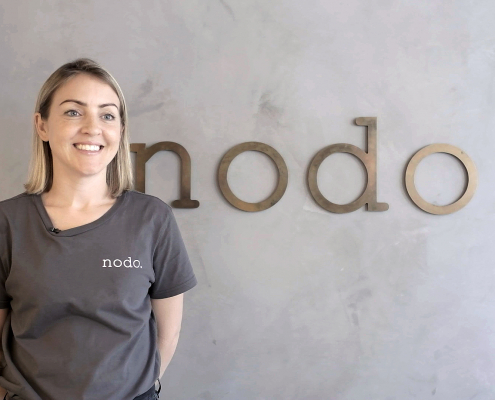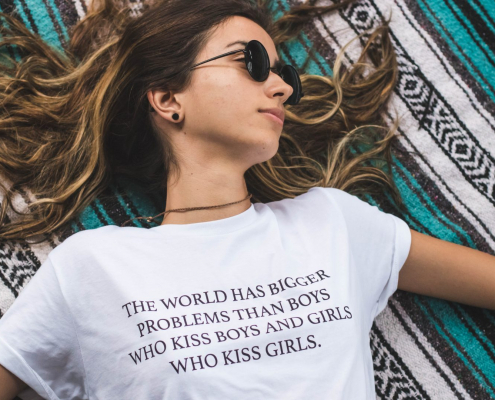It’s only 2 weeks until our Shibori textile dyeing workshop and we’ve been speaking a lot with workshop host Claudia Husband. A Brisbane-based printmaker, textile artist and lithographer, we couldn’t help but share a quick Q&A with Husband to get you even more excited about our upcoming workshop!
Thanks for taking time to chat with us, Claudia! Would you mind firstly telling us a bit about the print methods you practice and some basic differences between them?
Thanks for having me! I work predominantly in two printmaking methods, lithography and intaglio. In terms of the differences, there’s a long version and a short version to be told!! Intaglio printmaking is where the surface of the plate (usually metal) is physically altered to create grooves, lines and surface texture. The surface is then coated with ink, which is pushed into all the grooves and valleys, and the top surface is wiped clean. This is then run through a printing press onto paper!
Lithography is my primary medium, and my first love – lithography is a “planographic” process which basically means that, unlike intaglio, the matrix (either stone or metal) remains entirely flat. It is a chemical process based on the principal that oil and water repel. An image is drawn directly onto the matrix with a greasy crayon, which, after being treated with chemicals, forms a greasy reservoir within the surface of the stone or metal. When sponged with water, an oil-based ink can be rolled over the whole plate – the ink attaches only to the greasy drawing and the water protects all the white areas from accepting ink!
In short, the main differences between the two (aside from the vastly different processes) are the image quality that you get in the final print. Lithography produces a very soft, tonal line, similar to that of a graphite or charcoal drawing. It is a very unique aesthetic. Intaglio prints on the other hand tend to have much finer, more precise lines. There are benefits to both methods, but I generally prefer the drawing-like quality of litho.
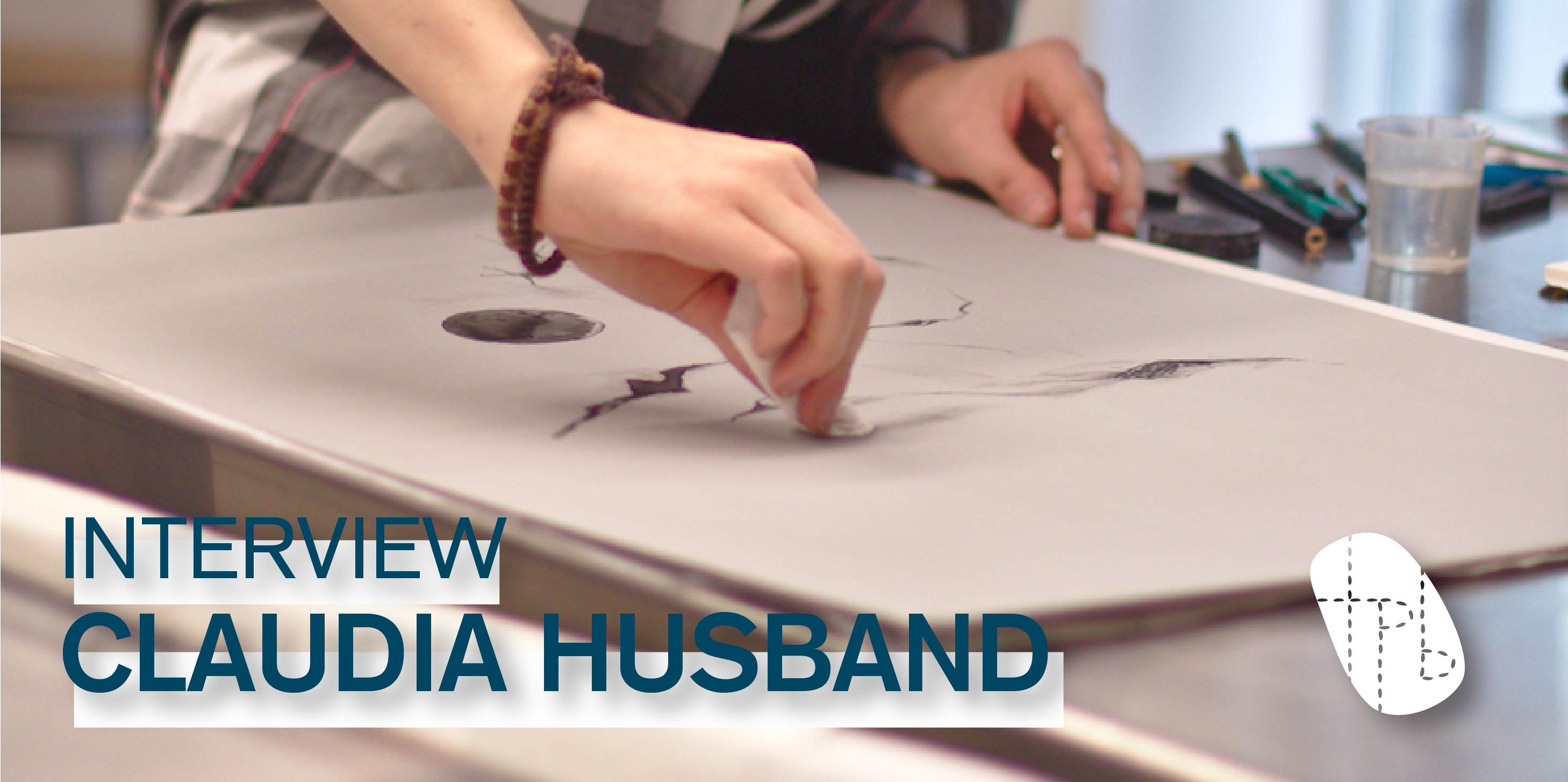
Why did you choose to work with different methods of print specifically as your medium? What made you choose to study it more in-depth over, say, sculpture or illustration?
The thing that initially drew me to printmaking was its close associating with drawing. The drawn line is quite an important part of the printmaking process, so it was a natural choice for me to begin with. I soon began to understand the incredibly large world of printmaking that exists beyond the very basic linocuts and monotypes we all learned in high school. There are hundreds of printmaking techniques to be learned, and hundreds of different ways of doing them. I learn something new every single day with printmaking, and will still be learning new things in 50 years time – I think that’s pretty amazing. Printmakers never stop learning.
What has been one of your most satisfying moments as an artist so far?
The most satisfying moment has probably been going to the United States to study lithography in Albuquerque at the Tamarind Institute. I loved every minute of it! The proudest has probably been graduating from QCA with a major in Printmaking, and that I’m still doing it. I didn’t really pick the easiest career path there, but I am trying!
Were there many differences between print methods used and taught in Australia versus overseas in the USA?
There a very few institutions in the world that are set up specifically to teach printmaking methods and train printers to be professionals in their field. Tamarind is the only one that provides formal training in lithography printing. What is fascinating about printmaking is that different people can teach even the most specific methods so differently. Strangely enough, I also came to understand how climates and locations can impact the way in which you work (and the success of the prints!). Purely due to our location and lack of resources, there are many methods that are taught in the United States that we just don’t have access to here in Australia – I was introduced to a number of lithographic methods that aren’t widely practiced here at all.
Can you tell us how you first got into the ancient art of shibori dyeing?
It’s hard to properly say how I first came into it actually! I got into textile printing (digital prints/direct to garment) first, and that was a direct result of my printmaking practice and a collaboration I began with Australian fashion designer Julie Tengdahl last year. I started thinking about how I could use my prints in another avenue that was a little more commercially viable and accessible to people. From there, my interest in fabric dyeing just grew! Initially, I was drawn more to indigo than I was to shibori, and this too was born from my background in printmaking. I have an inherent fascination for pigments and papers and textures – indigo (and it’s incredible history) is one of them. The shibori technique just seemed like a natural pathway, so I followed it!
We know you’re doing some pretty interesting and experimental stuff with the shibori technique at the moment – can you give us a little inside look at what you’ve been up to and the process?
Since working with ingido dye, I’ve become really interested in other natural dyes and methods. I’ve been experimenting lately with making my own dyes from plant material such as fruits and vegetables, spices (especially turmeric!) and tree barks. Depending on the way in which the dye bath is made can drastically affect the resulting colour – in the same day I got pink/purple and blue from the same cabbage!
So give us the dirt – what are the most frustrating things about working in print and with textiles?
For me, it’s finding the balance between producing something commercial, and maintaining my artistic integrity as a textile designer. In printmaking, the most frustrating thing is definitely finding a market to work with – when you’re in such a specific area of work, figuring out your place within it all is quite exhausting!
And what are the most unique/rewarding?
Both the textile and printmaking worlds have incredibly close-knit communities. Printmakers are quite unique in that sense – we need to share spaces in order to make our work, and so are constantly sharing ideas and methods. It’s a very open and supportive community, and I have some incredibly close relationships as a result of it.
Who are three artists (of any kind) who really inspire your work?
Brett Whiteley and Fred Williams are my lithography inspirations
India Flint is an Aussie textile artist who works with natural dyes.
Chuck Close made some lovely prints and extraordinary tapestries – his method of working with print mediums is very interesting and unique. The attention to detail is quite breathtaking.
And who are some up-and-coming designers, brands and pattern makers you think we should keep our eyes out for?
You should definitely be keeping an eye out for Tengdahl’s upcoming collections – there are a few things in there I’ve had a hand with 😉
What are your plans for 2015? What’s next for you?
Work, create and learn! The year is so short and there’s so much I want to do! After natural dyeing I want to learn to spin my own fibres. And then dye them. And then knit them…
Where can we find more of your work?
I have an Etsy store called Tawny Threads, where I upload my dyed/knitted/textile creations.

